Your Cart is Empty
Free shipping on Orders $79+
Free shipping on Orders $79+
Explore

Don’t Get Tricked: How to Outsmart Misleading Food Labels
September 02, 2020 5 min read
Reading labels should be easy, but it's often a lot trickier than you might think.
Food manufacturers have noticed that consumers are buying with health in mind, leading some manufacturers to label their products in deceiving or misleading ways. Most brands care more about making a sale than they do about your health. It’s sad but true.
You might think you're making healthy choices only to have been tricked into selecting something unhealthy or highly processed.
Most consumers aren't well-versed when it comes to food label regulations, which is another reason they can be difficult to understand. If this is something you're worried about, you've come to the right place.
Annie, our certified holistic nutritionist, has offered up some tips for reading food labels without being tricked.
Don’t Be Fooled By Front Labels
When you're walking up and down the aisles of a grocery store, there are hundreds of labels staring you in the face, begging to grab your attention. One of the best tips Annie can offer you is to completely ignore any marketing claims you see on a product's front packaging.
These front labels are often filled with claims or half-truths that will make you want to place the item in your cart. Do these claims work?Research shows that these health claims make consumers believe a product is healthier than the same product that doesn't list any claims on the front label.
Yet these health claims often have no basis in truth. They are often intentionally misleading to serve one purpose- to get the sale! A common example of these claims is mostbreakfast cereal boxes. From big cholesterol claims to immunity claims, there is little nutritional value to be gained from most commercially produced cereals despite their big promises.
We don’t want to make your trip to the grocery store take forever, but the best solution is to thoroughly examine ingredients lists before placing items in your cart.
6 Quick Tips
If you’re looking for a quick lesson on reading ingredients labels, here are a few quick tips:
- Product ingredients are sorted by quantity, so the first ingredient is always what they used the most in making the product.
- If you're in a hurry, check the first three ingredients because they often make up a significant portion of what you'll be eating.
- If one of the first ingredients listed is a type of sugar, refined grain, or hydrogenated oil, the product is unhealthy.
- Long ingredients lists (longer than two or three lines) often means the product is highly processed.
- Try to select foods that have whole foods within the first three ingredients.
- Watch out for serving sizes. One serving may be a half of a candy bar, making you think the candy bar contains half as many calories as it actually does.
Common Misleading Buzzwords
Let's turn things around and look at the front labels once again. The claims manufacturers use are specifically designed to catch your attention and to make you think their product is healthy. Let's do a little reading between the lines so you can understand what these claims actually mean.
- Light: These products are processed to reduce fat or overall calories. Sometimes, they may just be watered down. Make sure to check and see if anything has actually been ADDED to the ingredients (sugar, for example).
- Natural: This one seems straightforward, but it does not actually mean that the product even resembles something natural. All this term means is that the manufacturer used a natural ingredient (like grapes or rice) at some point in the process.
- Organic: Organic is a very popular buzzword these days, but look deeper into the actual ingredient itself. If they list organic sugar, it is still sugar!
- Multigrain: This sounds healthy at first, but all it means is that the product contains more than one grain type. Unless the product is specifically marked as whole grain, it most likely contains refined grains.
- Low Calorie: This just means the product has up to one-third fewer calories than the company's original product. So while it's lower than normal, that doesn't mean it contains a small amount of calories. One company's low-calorie product may have a similar calorie count to another company's original product.
- Low Carb: Processed foods that feature a low carb label can still be junk food.
- Low Fat: Often times, this simply means that they removed some of the fat and replaced it with sugar.
Different Names
Sugar can be a tricky ingredient to identify sometimes because it goes by over 50 different names - some you've never even heard of.
Food companies love to use this to their advantage by adding several types of sugar to their products. Why? Because this helps them hide the actual amount of sugar contained in their product.
Instead of listing sugar as one of the top ingredients, they can mention several sugars further down the list. If you only look at the first few ingredients, you might not recognize how much sugar it has.
So let's make it more difficult for these food manufacturers to sneak sugar by you. Here are the many names for sugar you might see on an ingredient list:
- Types of Sugar:Brown sugar, buttered sugar, beet sugar, caster sugar, cane sugar, coconut sugar, date sugar, invert sugar, golden sugar, organic raw sugar, muscovado sugar, evaporated cane juice, raspadura sugar, and confectioner's sugar.
- Other Added Sugars: Molasses, cane juice crystals, barley malt, corn sweetener, lactose, crystalline fructose, malt powder, dextran, fruit juice concentrate, fructose, glucose, galactose, maltodextrin, maltose, and disaccharides.
- Syrup Types: Golden syrup, high-fructose corn syrup, carob syrup, honey, malt syrup, agave nectar, oat syrup and maple syrup.
Labels You Can Trust
At Smart Pressed Juice, we’re proud of every ingredient we add to our products. We don’t hide behind fake or misleading claims. We understand the power of whole foods and ingredients, and we aim to harness these ingredients to help you reach your health goals.
Take our triple award-winningOrganic Pressed Greens, for instance. This is a crowd favorite for anyone who doesn't get enough vegetables. Each glass is like a farmer's market, featuring over 20 superfoods and ingredients to give your body the nutrients it needs.
We've worked tirelessly with dieticians and food scientists to come up with the most amazing greens juice ever. Our nutritionist-formulated Greens features delicious hints of real pineapple, apple, carrots, and citrus with no added sugar.
For more SMART lifestyle tips like this, visitwww.smartpressedjuice.com and follow us onInstagram andTwitter, or like us onFacebook. You can also visit ourAmazon store to stock up on our delicious juices.
Statements made on this website have not been evaluated by the U.S. Food and Drug Administration. Information provided by this website or this company is not a substitute for direct, individual medical treatment or advice. It is the responsibility of you and your healthcare providers to make all decisions regarding your health. We recommend that you consult with your healthcare providers regarding the diagnosis and treatment of any disease or condition. Products sold on this website are not intended to diagnose, treat, cure, or prevent any disease.
{"themeColor":"#574CD5","iconColor":"#574CD5","showLogo":true,"topBottomPosition":10,"rightLeftPosition":10,"iconSize":"small","iconCustomSize":64,"position":"bottom-left"}

